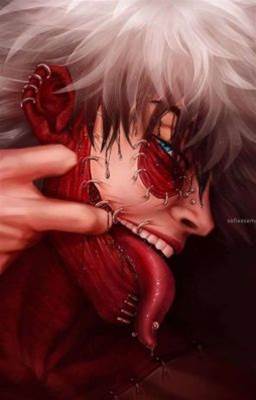《How to Write Science Fiction》Creating Your Universe - Part 6 - Aliens!
Advertisement
Alien Species
A lot of people, when they think of science fiction, automatically think of certain types of Aliens; bug eyes, comedy similes of ducks or teddies, or slavering bugs intent on destroying anyone who gets in the way. Rumours of flying saucers and UFOs have always fuelled the bug-eyed, slender view of what an alien should look like, but there is so much more you can do with them than just have them kidnapping random farm hands from the deep south for interesting experiments.
Given the scope of the human imagination, the potentially unlimited universe and a questioning mind, this is the point where you can have a great deal of fun as a writer. As we’ve mentioned before, when you’re looking to create an alien race, it’s well worth paying close attention to the evolutionary aspects of your species, if only for your own benefit as part of the development of your universe. But it can also be a tremendously rewarding part of that development, and you can create a host of interesting characters and / or creatures.
Whether you go for something like the ‘bugs’ in Ender’s Game or Starship Troopers, the cute (but hellish) Tribbles in Star Trek, or Zaphod Beeblebrox from Hitchhiker’s Guide to the Galaxy, all of them will have some sort of back story and development profile behind them.
Earlier, I’ve mentioned Niven’s The Integral Trees, a story wherein his creatures have evolved so they can see in all directions due to evolving to life in a gas cloud. But these are alien creatures.
You can have a lot of fun with the creatures, but what about sentient / sapient life? This sapient encounter is what people tend to think of when talking about aliens although it could of course be as simple as mankind encountering a single-celled organism not of terrestrial origin.
Advertisement
The development of any alien species will not only give rise to interesting behaviours, that may or may not be different to humanity, but will also allow you to explore how they behave when they encounter other species which may include humans. These characteristics may also have a profound effect on their interaction with your protagonists and other races. For example, in Childhood’s End by Arthur C Clarke, The Overlord, a member of a benevolent alien race, does not show himself to mankind until they are ‘ready’. When he does, his appearance is akin to The Devil, and the appearance of the devil in human history is deemed to be due to a collective precognition: where the human race had a vague premonition, a foreshadowing, of its ultimate change, and a creature looking like the Devil would be involved. Thus the echo of that event / meeting bounced back along human memory into the past.
The interaction with other races should also highlight their strengths and weaknesses. In the World War series by Harry Turtledove, the writer invented an entire race and culture which are reptilian in appearance. As the invading aliens begin to try and take over, the humans completely fox them culturally, as mankind seems to have no regard for proper planning, or working out the consequences of their actions: the human use of atomic devices horrifies the invaders for example, and they arrive on Earth expecting folk in chain mail and carrying swords. But we as a race have evolved far faster than the aliens have anticipated, so suddenly World War 2 takes on a whole new direction. This series is a great example of not only how an alien race can develop, but also how an alien culture might interact with ours. By considering not only the evolution and history of the human race, but that of another too, and then intermingling the two, Turtledove creates a universe of immense scope. Additionally though, he explores the limitations of both races which is wonderful.
Advertisement
There are of course many other examples of stories where a multitude of races are involved, Star Wars for example where a multitude of different species co-exist; or Men in Black, where aliens hide among us disguised or concealed. There are also the more malevolent alien species, where sapience is combined with a destructive tendency, such as the Alien and Independence Day films. In the latter, the invading species seem impervious, vastly technologically superior, and utterly destructive, and we as a species are relient on the ever present Will Smith (and rather wonderful Mr Goldblum) to save the day. So, the humans need to find a way in, and of course end up finding a chink in the alien’s armour, which allows delivery of a computer virus thus crippling the invader. As unlikely an event as that might be, you have to work out whether your Alien species are friendly, malevolent, or simply ambivalent to the presence of humans, and of course if there is to be a battle whether, and how, the humans win.
And remember: alien species don’t necessarily need to be 100% alien. Many writers have modeled their aliens based on behaviors noted on earth, whereby alien lifeforms are similar to terrestrial things like insect colonies, invasive species, parasites, or carnivorous species that simply outrank us on the food chain.
However you choose to depict your alien species though - whether they are sapient or otherwise, malevolent or peaceful - it’s worth keeping in mind the following guidelines. Give them some thought; work out their strengths and weaknesses, their foibles as a race, their appearance, what they need to live, how we meet them and how we interact with them. Get all your talking ducks in a row, and go from there.
But remember: your reader doesn’t need to know everything you do, and certainly not all at once.
Advertisement
- In Serial127 Chapters

dreamclot ~ poetry
~ singing in hopes of being sung to ~
8 88 - In Serial79 Chapters

Letting Go...
The first story is about imperfect love and forgiveness. This is a collection of short pieces, poetry, prose and visual images.
8 189 - In Serial11 Chapters

Song of Phoenix - Ordeal: Part 1
Kin and Nami set off from home to begin their people's coming of age Ordeal. Along the way they stumble upon a sinister plot and must set aside their own plans for the good of their people.
8 167 - In Serial39 Chapters

The Alteras Games: World Jumper Book 2
Jetsford finally made it back to Earth. Just to jump away to save his friends, or so he thought. When he comes to, Jefferson is right there with him. Before Jetsford is able to leave the world he has to reconnect with his friend. Of course it is never that easy for him. Found guilty of their crimes both Jetsford and Jefferson are thrown into the Alteras Games.
8 136 - In Serial19 Chapters

Don't Forget Me-Matthew Espinosa
I vaguely heard the words, "Don't forget me," as the world around me faded out.
8 195 - In Serial40 Chapters

✨Anime Oneshots✨
✨Some stories will contain SMUT while others will be on the more wholesome side. Choose wisely or just read them all✨I don't own any of the characters or pictures used. Just the stories are mine✨Yes, all the characters are aged up so don't come for me***🏅#3 in randomstories🏅#4 in oneshotcollection🍋= Smut🌸=Fluff🌹=Spicy
8 433







 Prev Chap
Prev Chap Next Chap
Next Chap Chap List
Chap List
 Boy
Boy Girl
Girl
